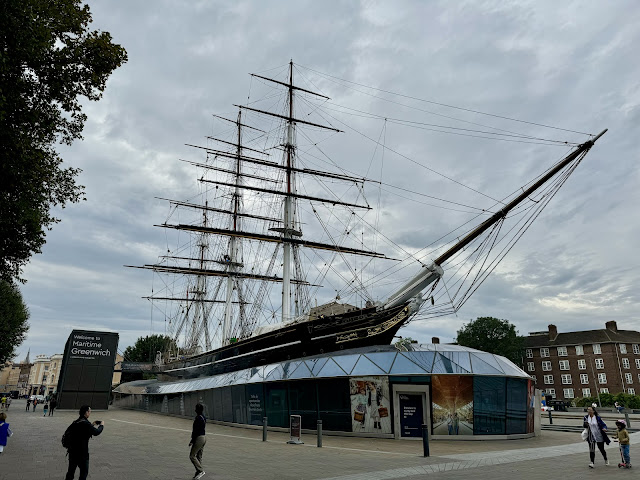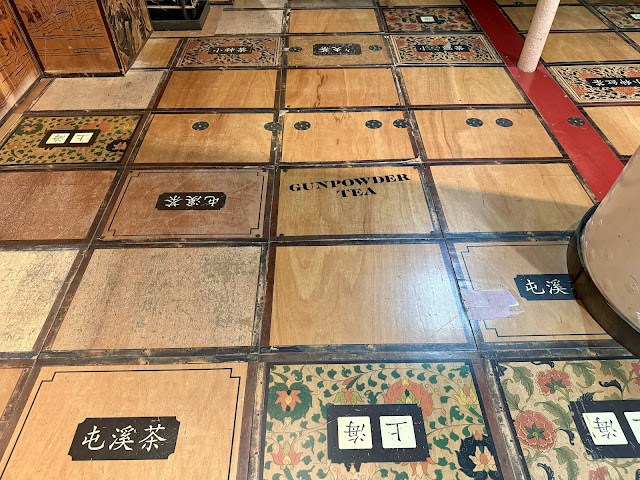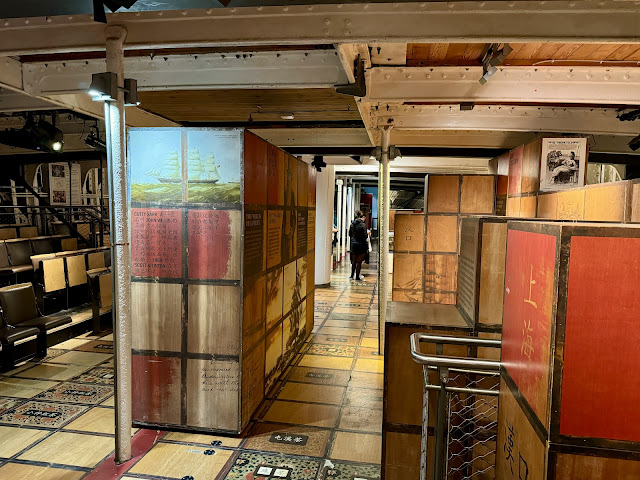We have traveled to a ton of places over the last 11 or so years. Six continents. 25 plus countries. Who knows how many cities and towns. Mountains. Rivers. Highways. Beaches. Volcanoes. Parks. Much more. Most of those places we've visited just once, and they will either stay that way or we'll say hello again once that destination gets back to the top of our list. It's a long list. Some places may need to wait a long while. Or forever. Hey, we have other things to see.
But that last part is not true of everywhere we've traveled. There are spots in this world that we've found ourselves in much more than once, compelled by some force or experience to go back and do it once again or polish off those things that we missed the second or third or fourth time. In some cases, when we've spent so much time in one place, it's started to feel like a second home. New York definitely leads the pack there. We don't do much tourist-y stuff in New York anymore. We just want to be there, spending time in our favorite haunts because we are in love with the place.
London is getting there. We are definitely running out of obvious, in the guidebook stuff to soak up in England's capital. Four visits in 10 years will do that. But we are not quite there yet. It's not New York, and I mean that on so many levels. Our time in London in September of this year found us turning over a rock or two to get one or two more drops of juice out of the place, including two experiences that built on a couple of days we'd spent elsewhere on the globe in the last 12 months. This post is about one of those.
Earlier this year, we spent some time in Southeast Asia. Part of that trip involved spending some time in Malaysia where we visited a tea plantation. It was honestly the most interesting and coolest thing we did in Malaysia. I'm not kidding. It was truly awesome. I'm not knocking Malaysia by saying the best thing we did was go to a sort of farm (although we WERE disappointed a bit in Malaysia). Visiting the tea plantation was well worth the trip.
When we think of tea today, of course, we often think of England, and not because that's where tea is grown, because it categorically is not grown in England. But whether you grew up there or when you are visiting and just have to have a cuppa with breakfast or crave some afternoon tea or a cream tea now and then, tea is now for sure, no doubt an English thing. We did, on just this one trip, partake in all three tea experiences mentioned in this paragraph so clearly we have bought into this drink association.
So how did the English get to love tea if you can't grow tea in Great Britain? Why, by exploring and then colonizing the world, of course. They first found the stuff in China, and started importing it into the country in the 1650s. Considering the speed at which information moved back then in the middle of the seventeenth century, it seems to me that tea caught on in England pretty quickly, perhaps spurred on by a mention of the drink by Samuel Pepys in his writings or Charles II's wife Catherine of Braganza being a bit of a tea fanatic.
The East India Company started bringing back tea from China in 1669 and Thomas Twining opened his first tea room in London in 1706. From that point on there was really no looking back. Tea would be intertwined into the national identity to this day. Eventually in the mid-1800s, the English started growing it in spots around the world that they claimed for their own whether whoever was there already wanted it or liked it or not. That's how tea plantations started in India, Sri Lanka (then Ceylon), Kenya and yes...Malaysia.
But even after they started growing tea for themselves, they still needed it from China.
So how did one transport tea from the far east (or Africa) back to England between the 1650s and the 20th century? On a ship. How else? I mean this is before air travel or reasonably safe and efficient and speedy overland travel. You wanted to get somewhere on the globe from Point A to Point B a few hundred years ago relatively quickly? You boarded a boat.
Speed counted here. Between 1861 and 1866, the first tea ship into port each season would earn its owner an extra shilling for each ton of tea on board. But beyond that, generally the faster you can move product from source to market, the faster you will turn a profit and the faster you can turn around and go get another load. In the second half of the 19th century, ship owner "Jock" Willis commissioned ship designer Hercules Linton to design the fastest tea ship in the world.
They named the ship the Cutty Sark, after a line in Robert Burns' poem "Tam O'Shanter". The Cutty Sark is still around today. It's in Greenwich, just a 40 minute or so ride down the Thames from the center of London. This, I had to go see to add one more level to the understanding of tea, which we had started to explore in February.
 |
| The tea clipper Cutty Sark, Greenwich. No, it's not early evening; it's England. |
I had been to Greenwich once before. It was a while ago (in 2007) and I know sometimes my memory is lacking but I couldn't recall seeing a full size original tea clipper hanging around the place when we went to visit the Royal Naval Museum, the Royal Observatory and the Queen's House all those years ago. It seemed to me that I should have noticed something this big just out in the open near the commuter and tourist boat dock along the Thames.
Turns out in this case my memory wasn't wrong. The Cutty Sark was in Greenwich in the summer of 2007 but it was under restoration at that time. Even worse, the ship was the victim of a fire in May of that year which halted and delayed the restoration so it was likely (a) under wraps and (b) under heavy protection and immediate recovery beyond just being under wraps. It's no wonder I missed it in 2007. I wouldn't in 2024.
 |
| The hull of the Cutty Sark, suspended over the exhibit floor. |
The Cutty Sark was custom built to transport tea. It was designed with a fast hull with sufficient cargo space to hold a lot of product but also with a low draft so that it wouldn't get snagged on the sand bars which were present at the mouths of the rivers in China which it would need to navigate to stock up on tea. And the speed thing that I mentioned earlier? The design worked. When it was built, the Cutty Sark was the fastest ship in the world. It almost seems crazy that it was custom built for tea. I mean it seems like that sort of a cargo wouldn't be that valuable to warrant the fastest ship in the world. But then again, we are a long way removed from the late 1800s.
The majority of the volume of the ship was reserved for cargo space. Everything that involved the crew sailing the ship took place on the main deck, or the top level of the ship. The enclosed living space dedicated to the captain, officers and crew of the ship are tiny. Privacy was non-existent for most all of the men on the ship that were not the captain. The two lower levels, the lower hold (below the water line) and the 'tween deck (with floor pretty much at the water line), are huge and existed strictly to make money. They would be packed as tight as possible with crate after crate of tea on the journey from the far east to England.
How much tea could the Cutty Sark transport in a single voyage? Enough tea for an astonishing 200 million cups with a total value in today's currency of 18.5 million pounds. In one trip. Seems like the owners of the Cutty Sark which they custom built for this purpose had figured out the game pretty well. They launched the ship in 1869.
 |
| The two cargo holds of the Cutty Sark: the lower deck (top) and the massive 'tween deck (bottom). |
The Cutty Sark's life as a tea clipper lasted less than 10 years. In 1878, the ship stopped hauling tea from China to England and started transporting wool from Australia.
In the year the Cutty Sark was launched, something else happened that would change the tea trade from China pretty quickly: the Suez Canal opened, creating a route to China that was 3,800 miles shorter. Steam ships now had a schedule advantage over sailing ships, which could not sail (but could be tugged) through the Canal. Combine a shorter route with a much less treacherous journey that avoided Africa's Cape of Good Hope and smaller insurance premiums and the tea clipper idea was dead. How fast was the Cutty Sark? Didn't matter. It wasn't 3,800 miles faster.
Today, the Cutty Sark is restored back to its early 1870s appearance, which for me was perfect because that's exactly the period in which I was interested. That restoration first occurred in the 1950s, long after the ship was transporting tea from China or wool from Australia or then ferrying cargo back and forth across the Atlantic Ocean from Portugal to South America.
The masts, rigging and deckhouses which housed the crew on the main deck had to be entirely reconstructed, but 90% of the hull, which was made from Indian teak and American rock elm, is original as is some of the iron frame which was used as the primary structure for the decks. The original iron today is painted white in the restored ship. There is a whole lot of iron painted white in the two pictures above.
The Cutty Sark today is in permanent dry dock. Those sailing days are long over. The ship is suspended on steel columns and enclosed by a glass roof structure that pretty much mimics the level of the ocean when the vessel was afloat. The main and 'tween decks and the lower hold are all accessible to visitors and there is a below grade museum level that allows you to pass on foot directly below the hull.
The fact that you can see the entirety of the exterior and interior of the ship is pretty special. The hull is massive, which considering it was designed with a low draft to allow passage over sandbars just indicates how much below water stuff there is on other ships out there not designed with the same feature as the Cutty Sark. The cargo spaces look as big inside as the hull looks outside. There is so much space in these interior holds. It must have been pretty impressive to see these things packed full of merch.
But the most interesting area for me was the main deck, where the captain, crew and officers lived, worked and slept, although I'm sure it was way more work than anything else, particularly for the crew. A one-way voyage on the Cutty Sark, despite being the fastest ship in the world, was almost four months long. That's four months on the open water sailing every day and working on the ocean's schedule. This is not a 9 to 5 gig that some of us enjoy in 2024. This must have been hard and demanding work with emergencies and conditions to react to at a moment's notice.
The safety record on the ship was impressive; they only lost five crew members on the open water. But that doesn't mean it wasn't extremely hard work.
 |
| The saloon used by the ship's officers at mealtimes (top) and an officers' bunk room for three (bottom). |
The only person with a private cabin on the ship was the captain. All other officers and crew quarters were shared. Each man aboard would need to have clothing for the coldest and hottest weather and would obviously need to do their work outdoors every day with no modern luxuries as simple as sunscreen. Some crew members could afford changes of clothes. Others couldn't, which must have really been inconvenient when your clothes were soaking wet in a storm.
The majority of "free time" was spent indoors in the deckhouses with fellow crew members. According to signage on the main deck, time not working was usually spent mending gear or playing board games, if someone had managed to bring one on board. Tobacco and, in rare situations, alcohol sometimes provided a different sort of relief from what I am sure was a lot of pain, aches and abject boredom. I can't imagine how difficult this sort of work was. I get bored at home on weekends sometimes and I have a ton of things to entertain myself. This must have been excruciating.
I love it when different trips in the same calendar year provide us opportunities to learn about different angles of a similar subject. This was completely unplanned. We had no idea when we visited a tea plantation in Malaysia that the Cutty Sark would be on this year's United Kingdom agenda. Similarly, we had no idea there was a tea clipper in dry dock in Greenwich when we planned a day trip down the Thames (we'll get to the other reason we visited Greenwich). Luck happens sometimes, although this was really a "make your own luck" situation by us continuing to explore different places in the world.
Every so often there is a little nugget of something in a place I have visited that fascinates me. That nugget on the Cutty Sark is the two suspended discs in the officers saloon in the picture above. They look like they might be there to hold candles or some other form of light, but they are not. They were installed in the saloon to hold bottles and drinks so that liquids (presumably some of it wine or liquor) would not spill when the ship tilted with the action of the water. I find these sorts of simple inventions intriguing. That's the last word on this one.
 |
| The Cutty Sark with modern London in the distance. |





